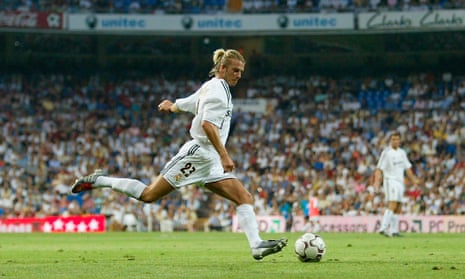When football overtook Catholicism as my religion, around the time I was 11 or 12, I quickly discovered three new stations of the cross at Kenilworth Road. The first: Ricky Hill simultaneously spinning, glancing, and stroking a pass out to the right. The second: Tim Breacker barely breaking stride before side-footing a devilish twirler towards the back post. And, finally and majestically, Mick Harford powering his 4x4 body skyward, crashing through limp opponents, tensing his neck, and – bam.
Similar images were on display every week in grounds up and down the country during the 80s, from pros to proles, open fields to Football League. Get to the byline. Whip the cross in. Reap the benefits. It was the English way.
Thirty years on, crossing is seen as uncouth and unfashionable: a caveman tactic in a world of Renaissance artists. You may have heard the statistic that only one cross in 92 directly leads to a goal. More damning still, a Czech professor claimed in 2014 that teams who cross more actually score fewer goals. No wonder a recent article in FourFourTwo asked whether the cross “should be consigned to history?”
So there was some scepticism when Garry Gelade, a statistical consultant who works with Premier League sides, announced at the Opta Pro Forum last week he planned to debunk three of the biggest myths about crossing. Especially as representatives from Arsenal and Barcelona were in the room.
The first myth he tackled was that crosses are an outdated and particularly English style of play. As he pointed out, Serie A had more crosses from open play per game than the Premier League in 2010, with Ligue 1 and La Liga showing similar numbers to England. And while crossing fell from 17.5 per Premier League game in 2010 to just over 15 in 2015, the trend and overall numbers were very similar to other top-flight leagues. But what of the research by Jan Vecer, a professor of mathematical finance at Charles University in Prague, who found that if a team make more crosses they will score fewer goals? Vecer had concluded that relationship was “directly causal” and when a team make no cross during the game, they would score 0.393 goals more per game – which works out as a staggering 15 goals a season.
Well, that turned out to be a myth. As Gelade demonstrated with some fancy number-crunching, Vecer had missed the effect of the state of the game – and that it is the current score which drives the number of crosses. In simple terms, teams tend to cross more when they are losing, and less when they are winning.
However Gelade was not finished there. Speaking almost three years to the day since Manchester United broke a Premier League record by hitting 81 crosses in a 2-2 home draw against Fulham – which turned out to be one of the final nails in David Moyes’ coffin – he also added considerable nuance to the statistic that it takes 92 crosses to score a goal.
As Gelade explained, that figure only referred to direct assists. So goals such as the Southampton striker Manolo Gabbiadini’s first against Sunderland on Saturday – where Ryan Bertrand’s cross touched Lamine Koné before hitting the Italian’s arm and going in – would not be measured in that statistic. If you really want to assess the effectiveness of a cross, Gelade argued, you really need to look at what happens in the six seconds after the ball is played into the box, so that’s what he did.
First of all he analysed 35,000 crosses from open play in the Premier League, from 2013 to 2015. Crosses from open play led to assists for 414 goals – a dismal 1.2% success rate.
Yet when Gelade tracked what happened in the next six seconds, that jumped, with a further 5,094 attempts on goal leading to 252 goals. There were also another 4,727 corners and 18 penalties, leading to another 80 goals. That brought the conversion rate from crosses from open play up to 2.2% – or one goal for every 45 crosses. Not enormously more productive, granted. But still much better – and a similar success rate to set pieces near the box.
Gelade was able to dive deeper, though, by working with a performance analyst from a leading Premier League club. Together they worked out the numbers could be nudged further in the crosser’s favour – depending on where the cross was made, where it was aimed, the angle of delivery, and whether it was closer to the near or the far post. So a cross from inside the box had a success rate of 7.6% if aimed towards the back post – double that of a cross hit to the near post.Of course context is vital here. The quality of the cross and the player on the end of it matters too – something the data was not able to take into account.
Yet even with these caveats, Gelade’s research is important. Not only does it offer clubs a better understanding of when crossing works best, but it does something more fundamental: it shows that in an era when central areas are increasingly packed with defenders, putting the ball into the mixer still has its place.

